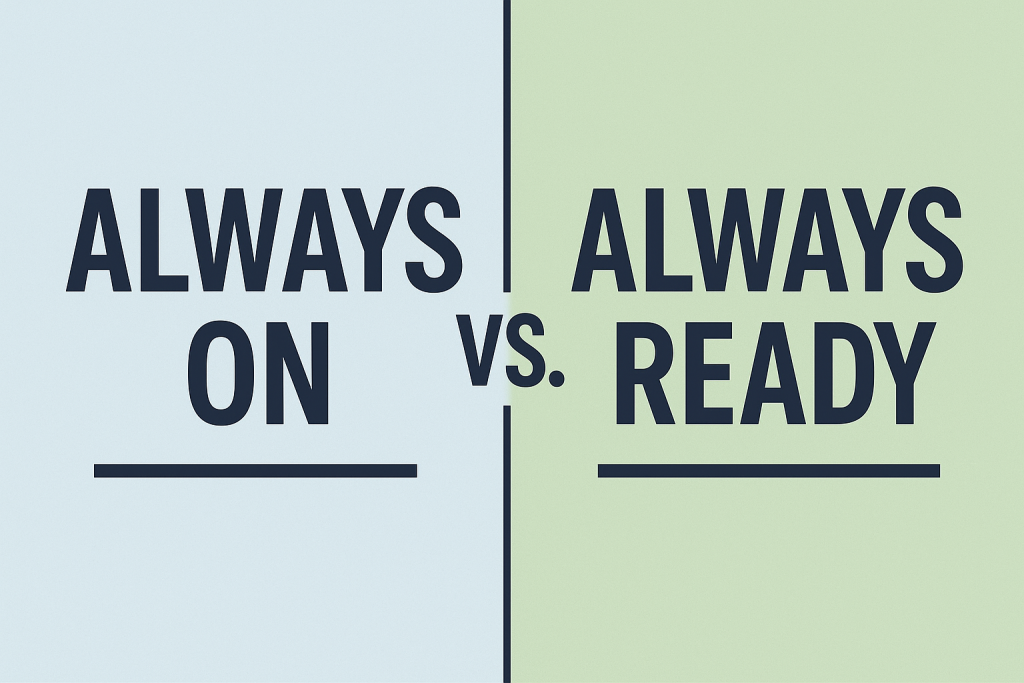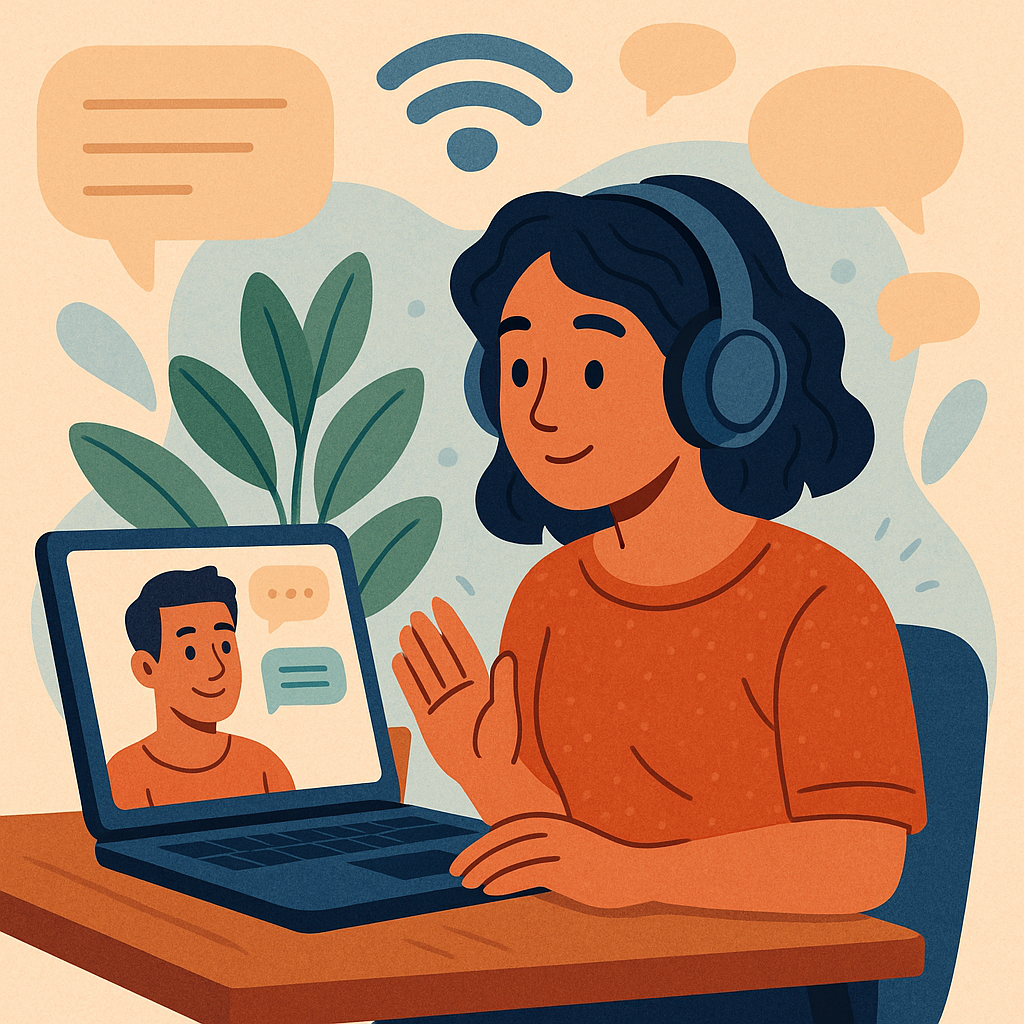In a culture obsessed with productivity, the terms “always on” and “always ready” are often used interchangeably. But they represent two vastly different approaches to work, focus, and well-being—especially in today’s hybrid work environment, where the boundary between personal time and professional obligations has blurred.
Understanding the difference isn’t just semantic—it’s strategic. In fact, knowing how to shift from being “always on” to being “always ready” can significantly improve your mental clarity, decision-making, and long-term performance.

The Rise of “Always On” Culture
“Always on” describes a state where people feel perpetually connected, available, and alert—usually through digital devices. This culture stems from expectations that employees will answer emails late at night, check Slack messages over the weekend, and remain plugged in even while on vacation.
According to a 2023 report by the Harvard Business Review, nearly 43% of remote workers say they feel pressure to be online and responsive at all hours, even when not officially working.
This kind of availability might seem productive at first, but it often leads to:
- Burnout and fatigue
- Poor boundaries between work and rest
- Decline in creative and strategic thinking
- A reactive mindset, instead of a proactive one
Being “always on” creates the illusion of control—but what it really builds is exhaustion.
What Does It Mean to Be “Always Ready”?
“Always ready” is a different concept entirely. It’s not about constant availability—it’s about intentional preparedness. It’s about setting up systems, routines, and mental frameworks so that when something demands your attention, you can respond effectively—not reactively.
This approach emphasizes:
- Mental bandwidth conservation
- Clear prioritization
- Strategic pauses and recovery
- Readiness to act when needed, not just to be seen
Think of it like an athlete in training. They aren’t constantly competing—but they are preparing to perform at their best when the moment comes.
Why This Distinction Is More Relevant Than Ever
In 2025, the conversation around digital well-being, deep work, and cognitive sustainability is gaining momentum. With AI tools automating more workflows and asynchronous communication becoming the norm, there’s a growing recognition that focus and energy—not constant activity—are the real currencies of productivity.
A recent study from Microsoft’s Work Trend Index revealed that “digital overload” has become a serious obstacle to workplace innovation. Employees spend more time in meetings and responding to messages, leaving less time for deep, meaningful work.
“Always ready” is emerging as a more sustainable model for individuals and teams navigating this shift.
Key Differences Between “Always On” and “Always Ready”
| Feature | Always On | Always Ready |
|---|---|---|
| Availability | Constant and reactive | Strategic and selective |
| Energy Use | Continuous depletion | Managed recovery |
| Focus | Fragmented | Deep and targeted |
| Decision-Making | Impulsive | Thoughtful |
| Output Quality | Variable | Consistent and high |
Signs You Might Be Operating in “Always On” Mode
Here are some red flags:
- You feel guilty when you don’t immediately respond to messages.
- You check your phone out of habit, not need.
- You struggle to focus for long periods.
- You rarely feel fully rested, even after downtime.
These patterns may seem normal, but they’re often signs of digital overcommitment.
How to Shift from “Always On” to “Always Ready”
Making this shift requires both mindset and environmental changes. Here’s how to start:
1. Audit Your Digital Inputs
Use tools like screen time tracking or email response logs to assess where your attention is going. You’ll likely find patterns of reactive behavior. Address them by:
- Muting non-essential notifications
- Scheduling “focus blocks” on your calendar
- Using inbox filters to reduce noise
2. Build Recovery Into Your Workflow
Short breaks between tasks aren’t indulgent—they’re essential. The University of Illinois found that brief diversions can significantly improve focus and performance.
Schedule:
- Microbreaks every 90 minutes
- Deep work sessions with recovery buffers
- Offline time at the beginning and end of the day
3. Shift the Expectation with Your Team
Discuss communication norms within your team or company. Clarify when responses are expected, and when they aren’t. Model “always ready” behavior by:
- Using status updates like “deep work time”
- Setting email auto-replies during off-hours
- Encouraging async communication
4. Train for Strategic Readiness
This includes developing the habits that keep your mind and body in a state of readiness:
- Daily reflection practices to clear cognitive clutter
- Physical activity for better stress regulation
- Intentional sleep hygiene to support brain function
“Always ready” doesn’t mean working harder—it means preparing smarter.
Industries Starting to Embrace This Shift
Forward-thinking companies are starting to prioritize cognitive well-being over digital presence. Notably:
- Software firms are replacing Slack overload with async documentation tools.
- Creative agencies are protecting “maker time” to preserve deep focus.
- Healthcare systems are implementing decision fatigue management for clinicians.
This trend is not about working less. It’s about designing work that makes better use of our limited mental energy.
The Bigger Picture: Sustainable Productivity
As digital noise increases, our ability to remain “always ready” becomes a competitive advantage—both professionally and personally. Organizations that prioritize deep work and recovery see higher-quality outcomes. Individuals who reclaim their attention report lower stress and greater life satisfaction.
The shift from “always on” to “always ready” is not just a productivity trend—it’s a movement toward healthier, more sustainable work.
Reference
- Harvard Business Review (2024) How to Fix Your Company’s Culture of Overwork. Available at: https://hbr.org (Accessed: 23 June 2025).
- Microsoft (2025) Breaking down the infinite workday. Available at: https://www.microsoft.com (Accessed: 23 June 2025).
- Kim, S., Park, Y., & Headrick, L. (2018) Daily micro-breaks and job performance: General work engagement as a cross-level moderator. Available at: https://psycnet.apa.org (Accessed: 23 June 2025).






